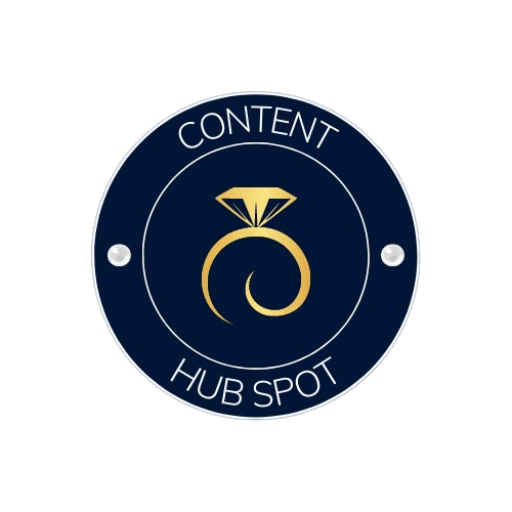Over my years in the digital marketing world, I’ve learned that content marketing is a game-changer for businesses. It’s essential to understand its four main components, which serve as the pillars of an effective content marketing campaign. It’s like the secret sauce that helps them connect with their audience and thrive. In this blog post, I’ll break down the four essential parts of content marketing based on my experience.
The 4 Main Components of Content Marketing

The 4 Main Components of Content Marketing are: Content creation, content distribution, Audience engagement, Performance Measurement and Optimization.
Components of Content Marketing
Component 1: Content Creation
Creating content is a big part of content marketing. It means making stuff that your audience likes and finds helpful. Let me share what I’ve learned:
Research and Analysis: To start, do some research to find out what your audience likes and what problems they have. Tools like Google Analytics and keyword research can help you figure out what’s popular. From my experience, making content that matches what people are looking for works really well.
Different Types of Content: You can make all sorts of content like articles, how-to guides, pretty pictures, and fun videos. Just choose what fits your message and what your audience likes.
Consistency and Schedule: It’s important to keep a regular schedule for posting content. This helps your audience know when to expect new stuff from you. Based on what I’ve seen, having a set schedule can keep people interested and coming back for more.
Your Unique Voice: Make your content special by adding your own voice and stories. Share personal experiences that relate to what you’re talking about. This can make your content more interesting and memorable.
Component 2: Content Distribution
Effective content distribution ensures that your content reaches the right audience. It’s about getting your content in front of the people who can benefit from it most. Making sure your content gets to the right people is very important. Here’s how I do it:
Social Media: I’ve found that social media is a great way to share content. It’s important to customize your content for each platform and engage with your followers. I also use scheduling tools to post regularly.
Email Marketing: Building and keeping a list of email subscribers is key. I create interesting email campaigns that send useful content directly to people’s email inboxes. Personalizing emails and sending the right content to the right people can make a big difference.
SEO and Organic Traffic: I optimize my content so it shows up on search engines like Google. This means using the right keywords and making sure my content is well-written. Good content can attract more visitors over time.
Content Sharing and Partnerships: I collaborate with other websites and content creators to share my content with their audiences. This can help me reach new people and build authority in my niche.
Paid Promotion: Sometimes, I set aside a budget for paid advertising. This can be useful for getting my content in front of more people quickly, especially for important projects or launches. Platforms like Google Ads and social media ads can be really effective.
Component 3: Audience Engagement
Engaging with your audience means making them feel like part of your online family and building strong relationships. Here’s how I do it effectively:
Active Communication: When people comment on my content, I make sure to respond. I answer their questions, thank them for their feedback, and have real conversations. Based on my experience, this can turn casual readers into loyal fans.
Moderation and Community Rules: If I have a blog or forum, I set clear rules for how people should behave. I also watch over discussions to make sure they stay friendly and welcoming, even when people have different opinions.
User-Created Content: I encourage my audience to make and share their own content related to my brand or products. When they do, I showcase it on my platforms. This shows that my customers are happy and loyal, which can attract even more people.
Feedback and Surveys: I actively ask my audience for their thoughts through surveys and direct questions. I use this feedback to make my content and offerings better and more in line with what they want. It’s like getting advice from your friends to improve your blog or business.
Component 4: Performance Measurement and Optimization
Checking and improving your content strategy regularly is super important for long-term success. Here’s how I do it:
Tracking Important Stuff: First, I figure out what’s most important for my goals, like how many people visit my website, how many of them buy something, or how often people click on my content. Then, I keep an eye on these things all the time. I’ve learned that keeping track helps me see what’s working and what’s not.
Testing Different Things: Sometimes, I like to try out different stuff in my content, like changing the titles, pictures, or what I ask people to do. I compare these changes to see which ones people like more. This helps me make my content better based on what my audience prefers.
Checking My Old Stuff: Every now and then, I look at the content I’ve already made to see how it’s doing. Some pieces may be doing really well, while others might need some updates or even combining. This way, I make sure my content is always top-notch.
Adapting to Changes: I’m always ready to change my content strategy based on what I learn from my data. The internet keeps changing, and I need to change with it to stay on top of my game. So, I’m flexible and ready to adjust my strategy whenever needed.
Conclusion
In conclusion, content marketing has four main components: content creation, content distribution, audience engagement, and performance measurement and optimization. My experience in content marketing has shown that success lies in the seamless integration of content creation, distribution, audience engagement, and performance measurement and optimization. By continually refining and optimizing each component, you can build a robust content marketing strategy that not only attracts and engages your target audience but also drives sustainable growth for your business





Pingback: What are the 7 steps of content marketing? - Content Hubspot